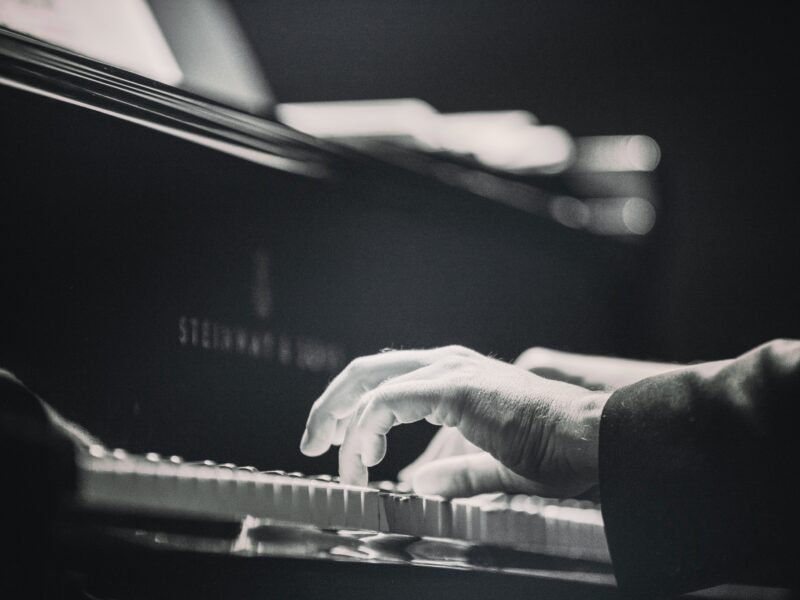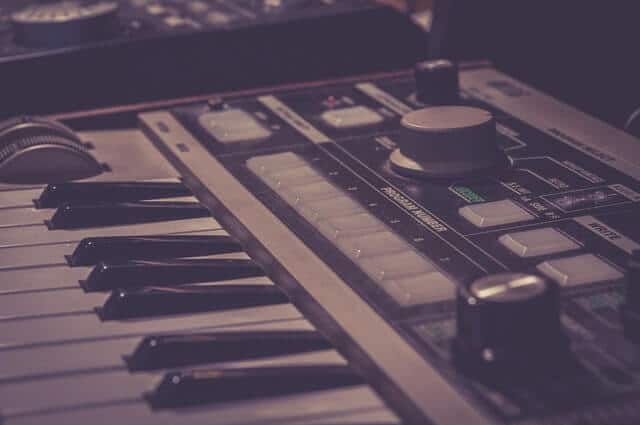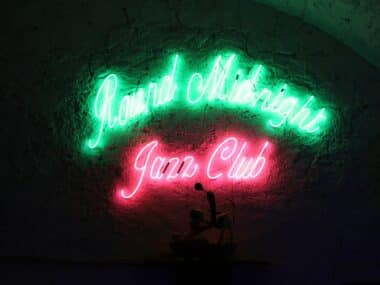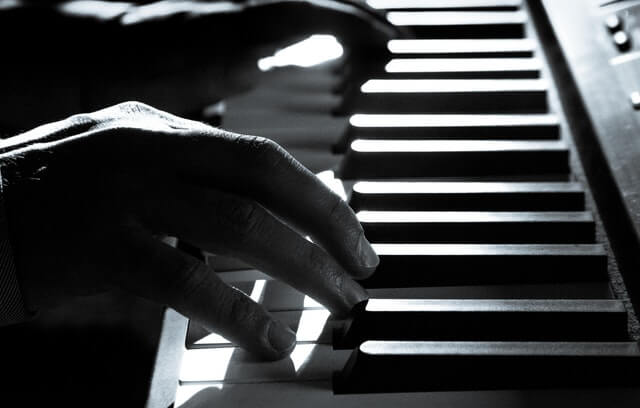*Keyboardkraze now has a nearly 24/7 chat service directly with me should you have any questions regarding keyboard/plugin choices! This is connected directly to me and it is not AI.
Table of Contents
Have you learned the basics of piano chords and feel ready to learn piano jazz chords? Chances are, you have already researched the basic ways to learn to play the piano.
In this article, we will cover everything you need to know to start playing basic jazz piano chords and provide images. If you need a refresher on the very basics of piano, you can check out our piano note chart.
In addition, we have also created or own article on piano chords for beginners here.
Beginner Jazz Piano Chords/Theory
Let’s start with a quick review of the basics, as understanding how basic chords are built will help you know the jazz chords.
Let’s jump right into the basics of jazz piano chords below.
Chords are constructed in thirds. For example, a three-note triad (tri=three) can be built by playing any note (which will be the chord’s root), a tone a third above the root, and a tone a third above that one. For example, C-E-G:
Basic Major Piano Chords
Please note, we will be looking at the key of C Major for the ease of explaning the theory behind jazz piano chords. I also recommend checking out the C Major piano scale here.
This chord is C major.

The middle note of a triad is called the 3rd (since it’s a third above the root), and the top note is called the 5th, as it’s a fifth above the root.
An additional note can be added to a triad to form a four-note chord or tetrad (tetra=four), commonly known as a seventh chord because the top note is a 7th above the root, for example, C-E-G-B:
Seventh Piano Chords
This chord is C major 7.

The “basic chords” are the triads and tetrads that can be formed by stacking different combinations of major and minor thirds.
There are four basic triads: major, minor, diminished, and augmented. There are (at least) five basic tetrads:
Major 7, dominant 7, minor 7, minor 7 flat 5, and diminished 7. There are also several other less common tetrads, such as minor major 7.
Keyboard players who want to be proficient with chords and/or improvise or compose should master the basic triads and tetrads in all 12 keys.
Ninth Piano Chords

So what differentiates jazz chords from the primary triads and tetrads? Over its history, jazz developed a richer (some might say more dissonant) sense of harmony by adding even more tones to the basic chords.
So, for example, D (the 9th) can be added above the 7th of C major 7 (C-E-G-B-D):
11th Piano Chords

If we add another tone above the 9th, we get the 11th, which in a major 7 chord is typically raised by a half step, as the natural 11th (F natural in this case) would be too dissonant, even for jazz (C-E-G-B-D-F#):
But how are you supposed to play that monster with five fingers? We’ll get to that in a moment!
13th Piano Chords

We can add yet another tone above the 11th, the 13th (C-E-G-B-D-F#-A):
These additional tones, the 9th, 11th and 13th, are called tensions (because they make the chord “tenser,” i.e. more dissonant) or extensions (because they extend or enlarge the basic triads and tetrads).
I prefer “tensions” because this word reflects their sound rather than their appearance, and music is, after all, an aural art.
Notice that except for the one alteration (F#), by adding a 9th, 11th and 13th to a tetrad we’ve used all seven tones of a major scale!
Any of the above jazz chords can easily be played in various ways with two hands, for example:
One of the fundamental characteristics of jazz is that it is improvisatory. When jazz pianists improvise, they most often do so with the right hand and comp (“accompany”) their right hand with left-hand chords.
This means we need a way of playing these more complex chords with just one hand (usually the left hand). Various conventions have been evolved for accomplishing this by eliminating less essential tones to make room for the tensions. For example, if a chord contains a 9th, the root is often omitted (the expectation is that in a jazz ensemble, the bass player will play the root).
Final Thoughts On Beginner Jazz Piano Chords

Likewise, if a chord has an 11th or 13th, the 5th is often omitted (ditto the bass player).
A time-tested way to learn the jazz chords is by practicing these conventional voicings using the II-V-I progression, a sequence of chords ubiquitous in jazz harmony, in all 12 keys.
The voicings are commonly divided into two groups, the “A voicings” and “B voicings,” which are really just different inversions of the chords, allowing the left hand to play them in the middle of the instrument where they sound best, leaving the right hand free to improvise above them.
Ready to learn jazz chords in the 12 major keys? Download this PDF. Have fun!
Doug Hanvey offers piano lessons at Creative Keyboardist.







